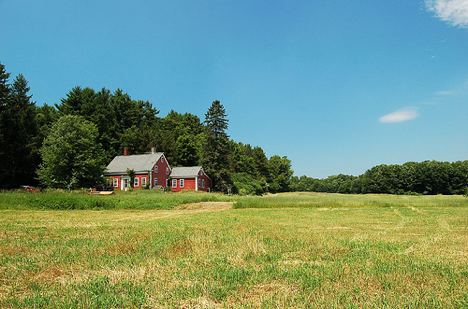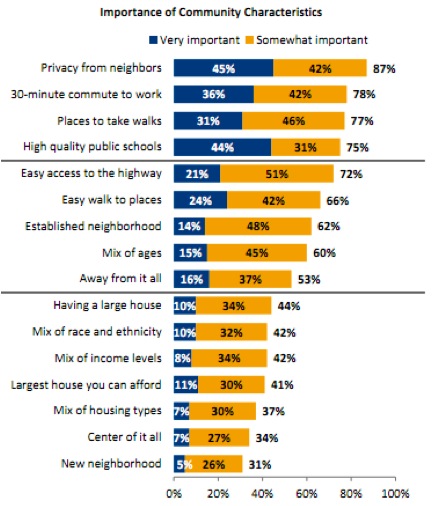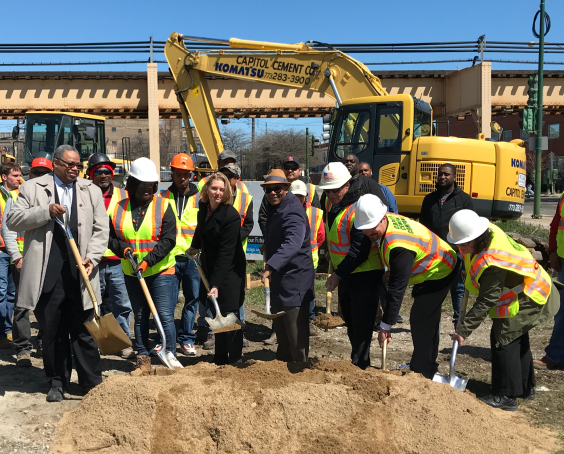Is the Realtors’ Survey Really a Ringing Endorsement of Smart Growth?
1:04 PM EDT on April 19, 2011
Urbanists are celebrating the results of the National Association of Realtors’ 2011 Community Preference Survey, which, according to the NAR, shows a clear preference for mixed uses, shorter commutes, and transportation options. The survey shows that people are asking for more walkable amenities and shorter commutes: a good sign.
But the survey is also rife with contradictions. It reveals, for instance, that Americans retain their affinity for certain characteristics found mainly in suburbia: more than anything, they prize privacy, and they overwhelmingly prefer single-family detached housing.
Wading through the survey, it can be difficult to draw any hard and fast conclusions. Respondents said community characteristics are more important than the size of the home, with 88 percent saying location mattered more than size. And walkability was one of the traits people seek the most, with 66 percent saying the ability to walk to places in their community is important. High-quality public schools, the Achilles’ heel of many big cities and a primary driver of families to the suburbs, are also highly sought after. Meanwhile, “easy access to the highway” ranks just under good schools on the list of people’s preferences. And 53 percent want to be “away from it all” (as opposed to 34 percent that want to be at the “center of it all”). Slightly more people want a big house than a diverse set of neighbors.
Only 19 percent of respondents said they wanted to live in cities, with another 28 percent wanting “a suburban neighborhood with a mix of houses, shops, and businesses.” That means more than half prefer rural living, traditional suburbs and small towns. Those numbers might show that more people want mixed-use places than the market currently provides, but they also suggest more ambiguity than the claims coming from NAR and some urbanist circles -- that the survey is proof that smart growth is the new standard.
Another way to read the survey is to compare this year's results to past ones and see what's changing. But the trends don't all point in the same direction. The 2011 survey shows a modest increase in support for some smart growth principles over 2004 -- for example, five percent more people this year said their community needed more public transportation (51 percent in 2011 versus 46 percent in 2004) and four percent more wanted more walkable amenities. On the other hand, two percent fewer said their community needed more low-income housing and one percent fewer wanted more places to bike. The most dramatic change, however, was that in 2004 only 19 percent wanted more big-box stores in their communities, and now, 28 percent do.
Buried in the report is some good news for transportation reformers: When asked what was the best long-term solution for reducing traffic, 50 percent said better public transportation, 30 percent said higher-density communities, and just 18 percent advised building new roads.
But the single most pronounced preference is the desire for privacy. And for most respondents, that means big lots and detached homes. Nearly nine in ten respondents said privacy from their neighbors was “very” or “somewhat” important. Eight in ten want to live in single-family detached housing and six in ten would accept the trade-off of a longer commute. Paradoxically, however, six in ten also said they would trade some square footage for a commute time of 20 minutes or less. (And what does "privacy" entail, anyway? Would protection from peeping Toms suffice? Freedom from things like shared laundry rooms and neighbors' footsteps on your ceiling -- experiences intrinsic to multi-family dwellings? Or do they want to able to get in and out of their houses without seeing their neighbors at all?)
Walkability to schools, stores, and restaurants was voted nice but expendable: six in 10 would rather drive to those things if walking would mean smaller lots. Seems like there’s still a lot of indecisiveness about how much people care about private space versus time on the road.
One lesson you can safely draw from the survey is that a lot of Americans just want it all: A house all to themselves and a nice walk to local amenities, a short commute and a neighborhood away from the bustle of the city.

In the real world, you have to make choices. Much attention has been given to the survey question that asked participants which community they preferred: one with only single family houses on large lots, no sidewalks or walkable amenities, copious parking, and inadequate transit; the other with a mix of housing options, sidewalks, walkable amenities, limited parking, and nearby transit. Despite (in my opinion) a pretty heavy bias toward the smart growth option in the framing of the question, 43 percent chose the sprawl option and 56 percent chose the smart growth option. Taken in the context of other questions in the survey, many of those who chose the smart growth option must be okay with different types of housing in the area as long as they are living in a single-family detached house with a yard.
That question instructed participants to "assume that the quality of the schools, crime rates, and cost of house are exactly the same in the two communities." What would have happened to those results if the suburban-style community had lower crime rates, higher-ranked schools, and cheaper houses per square foot, as communities like that usually do?
Ultimately, the survey results are an imperfect barometer of preferences for types of housing and neighborhood layouts. The best data about the demand for walkable, urban places comes from the housing market, and recent trends in residential construction show that development patterns are shifting to meet demand for urban neighborhoods.
Can the NAR survey help inform policies to shape future development? Urban theorist Richard Florida saw in the results a new dichotomy: “The choice isn't between urban and suburban,” he wrote, “but between neighborhood and subdivision.” Indeed, the city still loses against the suburbs, but if we differentiate between different ways of building suburban neighborhoods, we begin to tease out the subtleties. "Retrofitted" suburbs with somewhat greater density, more transportation choices and a mix of uses could be a path to satisfy Americans' contradictory preferences.
Stay in touch
Sign up for our free newsletter
More from Streetsblog USA
Justice Dept., Citing Streetsblog Reporting, Threatens to Sue NYPD Over Cops’ Sidewalk Parking
The city is now facing a major civil rights suit from the Biden Administration if it doesn't eliminate illegal parking by cops and other city workers.
Five Car Culture Euphemisms We Need To Stop Using
How does everyday language hide the real impact of building a world that functionally requires everyone to drive?
Pressure is mounting to replace embattled CTA President Dorval Carter
Here's a look at what elected officials and other media outlets have said about the issue recently.
Friday’s Headlines Got Served
Another day, another GOP lawsuit trying to overturn a Biden administration climate change rule.





